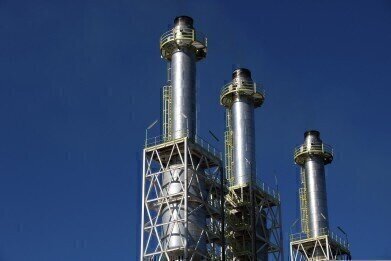Air Monitoring
5 Applications of ADMS 5
Oct 10 2022
Our growing awareness over the environmental implications of anthropogenic activity has led to a raft of new legislation aimed at curbing harmful emissions from industrial sites across the world. In order to help facility owners and regulatory authorities ensure that legal limits of pollution are not being exceeded, sophisticated technological solutions have been developed.
One such solution is ADMS 5, an air dispersion modelling software package which is capable of predicting the current and future emissions of existing and proposed industrial installations. Although originally developed for use by regulatory bodies in the UK, it has since been taken up by public and private interests across the globe, who use it to carry out a number of important tasks. Here’s a closer look at just some of them below.
Legal compliance
Different governments have introduced different laws to govern industrial emissions within their borders. For example, standards and methods for environmental monitoring in the UK and Europe are created by the Comité European de Normalisation (CEN) in Europe and the International Standardisation Organisation (ISO) on a global scale. ADMS 5 can help site owners model the emissions that their site currently produces and measure it against these to guarantee compliance.
Planning permission
As well as producing high-quality data on existing facilities, ADMS 5 is also an invaluable tool in mapping out predicted emissions from proposed installations, too. This allows developers to see whether their plans will comply with legal directives and, if so, prove to the relevant authorities that they will remain within the remit of the law. As such, ADMS 5 is crucial in achieving planning permission for upcoming construction projects.
Stack height determination
When a new facility is in development, there are a number of logistical challenges to overcome. Determining the exact height at which the flue gases emanate from the smokestacks is one major part of these, since it must be sufficiently tall to ensure that all gases, dust and other contaminants do not compromise the air quality of the immediate vicinity of the plant, especially if there are residential buildings nearby. ADMS 5 can provide key information in this regard.
Odour modelling
As well as poor air quality, odour pollution is another serious concern for those living in proximity to waste treatment centres, smelting furnaces and other industrial works. Although these types of facilities are normally located on the fringes of towns and cities, the creep of urbanisation means they can soon be swallowed up. As such, odour measurement and control is all-important and ADMS 5 can predict plume behaviour, quantify gas concentrations and even foresee airborne chemical reactions.
Safety and emergency planning
It’s incumbent on all site owners to have a detailed plan in place for what to do in case of accident or emergency. Since ADMS 5 is capable of incorporating so many different variables (such as terrain topography, dry and wet deposition and radioactive decay, among others), it can be a supremely helpful source of information when fashioning such a plan. For that reason, it’s not surprising to see it as a vital component of health and safety strategizing for many plant owners.
Digital Edition
IET 34.2 March 2024
April 2024
Gas Detection - Biogas batch fermentation system for laboratory use with automatic gas analysis in real time Water/Wastewater - Upcycling sensors for sustainable nature management - Prist...
View all digital editions
Events
Apr 30 2024 Melbourne, Australia
Apr 30 2024 Birmingham, UK
May 03 2024 Seoul, South Korea
May 05 2024 Seville, Spain
May 06 2024 Minneapolis, MN, USA


















